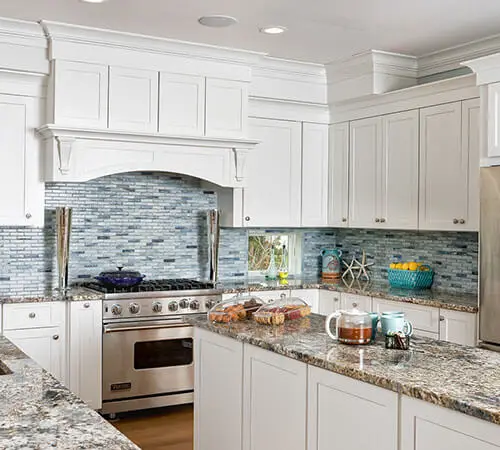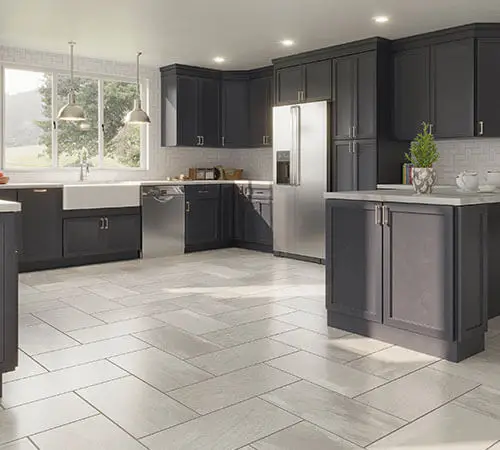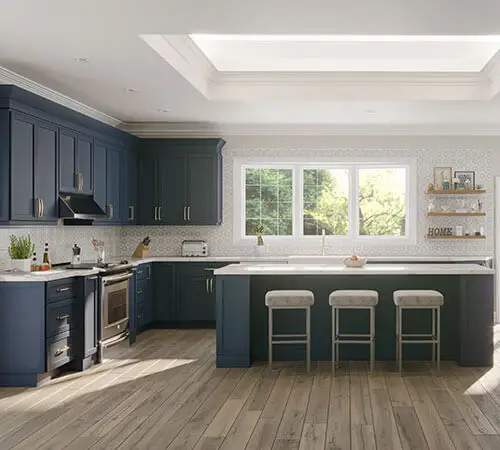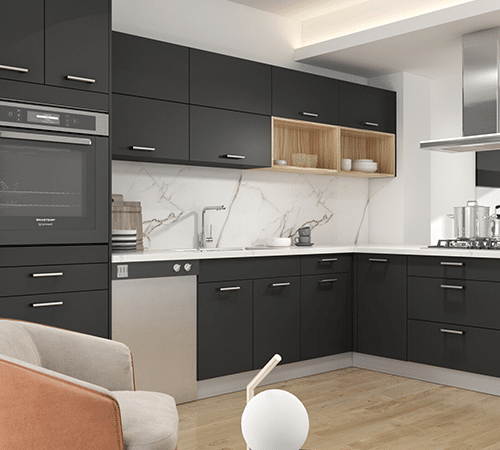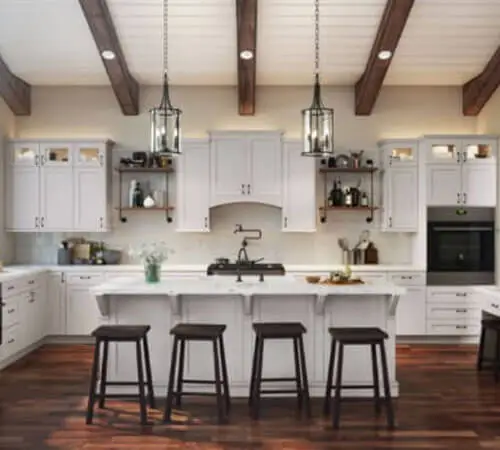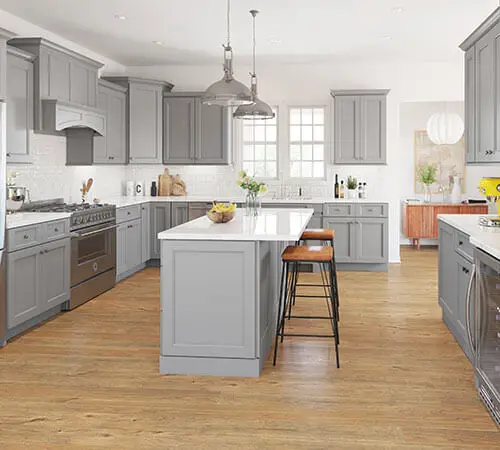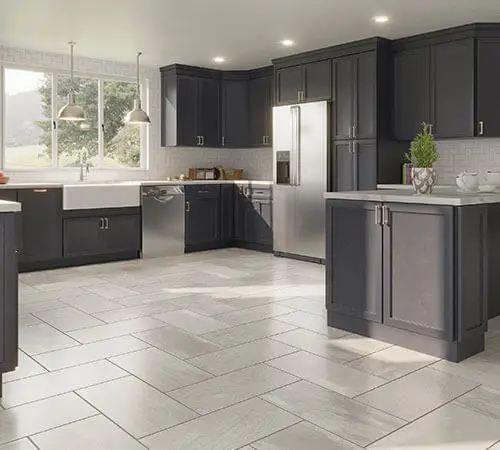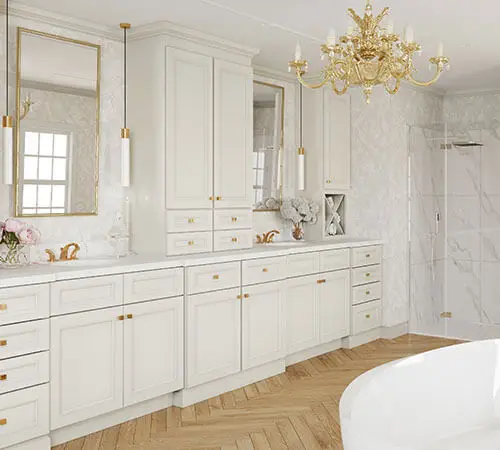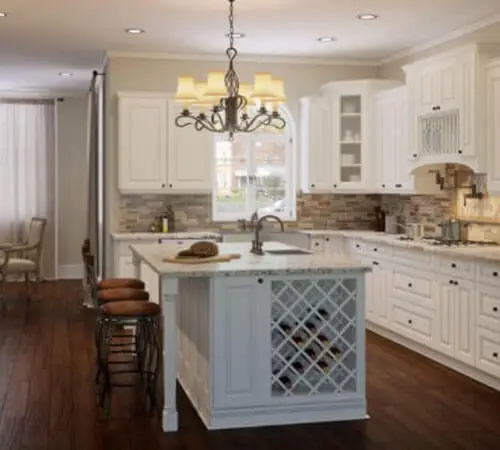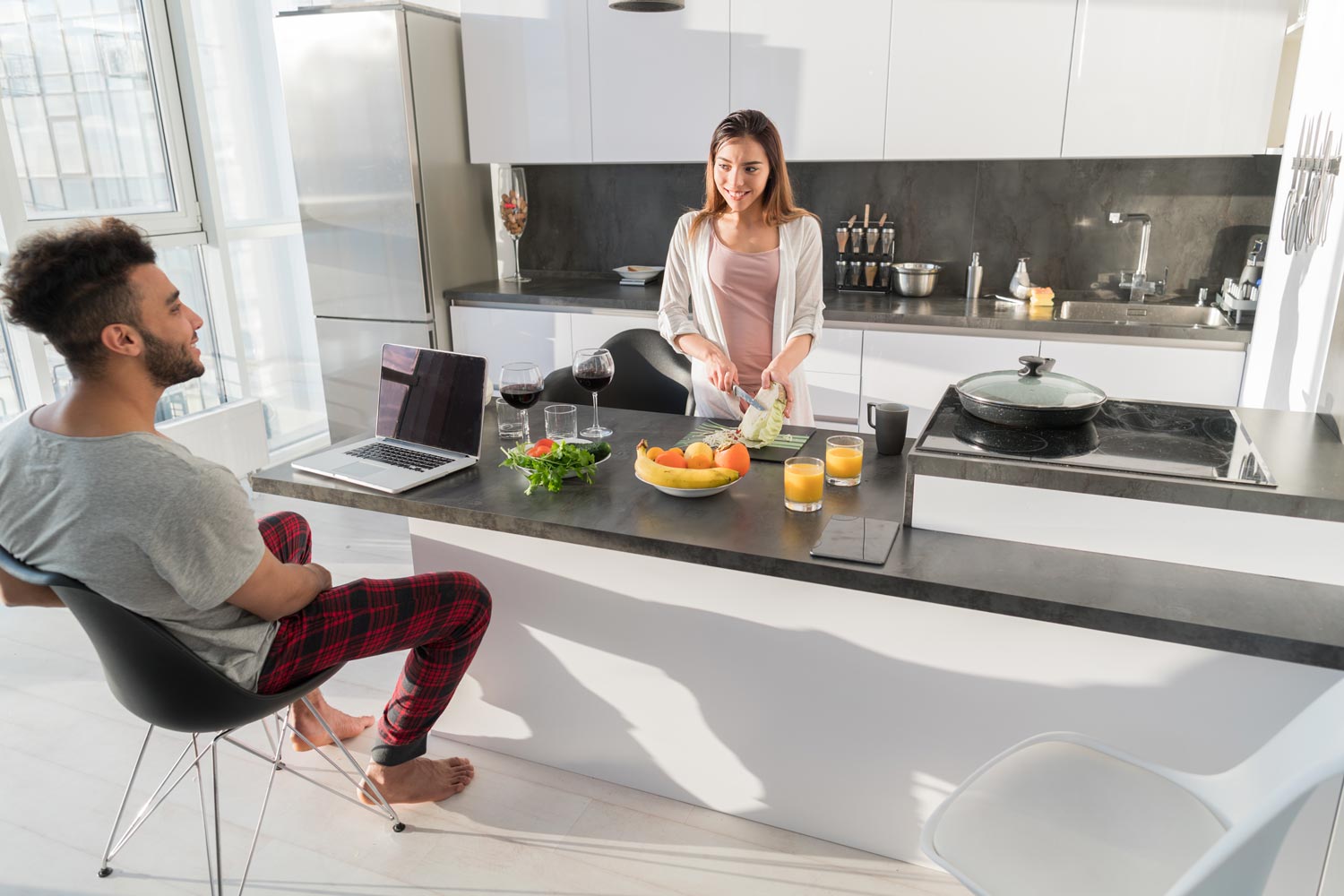How to Create a Functional Kitchen Layout
If you’re planning a new kitchen, you have undoubtedly become somewhat obsessed with tile and paint colors, appliance finishes, and countertop materials. And that’s okay, these decisions must be made, and they are essential to a beautiful, well-appointed kitchen. But you also need your new kitchen to be ultra-functional. A badly designed kitchen will be a chore to work in and you will become disenchanted, despite its beauty, very quickly. Your stunning RTA cabinetry, glimmering countertops, top of the line stainless appliances, and lustrous fixtures need to be placed in the perfect configuration so your kitchen will be as efficient as a well-oiled machine.
First, take stock of what your kitchen will be used for. Food prep, cooking/baking, and cleanup are a given. But kitchens today are also used for homework, bill paying, computer browsing, socializing, eating quick meals, entertaining, crafts, laundry, and more. When designing a functional kitchen, comfortable and convenient space must be planned for all of your family’s activities.
Sounds daunting, right? Don’t despair. This is where the kitchen island comes into play. The kitchen island is often dubbed the “workhorse’’ of the kitchen because, if designed for maximum functionality, it may have any number of jobs to do — and it does them oh-so well! The kitchen island is a natural multi-tasker. Today’s island wastes no space, from the work surface to the storage and appliances installed underneath, every square foot should have a purpose. The kitchen island can be home to the cleanup and food prep center, the cooking and baking center, and is often the scene of entertaining or where kids hang out with friends. It’s often used as a buffet for parties. The eating counter is almost mandatory in kitchen designs today with comfortable seating for casual meals and snacks, homework, visiting with guests, or cruising the internet.
Even if there’s no room in your kitchen for an island, any kitchen layout can become a fully functional kitchen with some good creative design. Your kitchen may be one of many shapes: galley, one-wall, U, L, or island. But the one shape they all have in common is the kitchen triangle. The kitchen triangle is what we design the kitchen around. When preparing a meal, we have three major needs: the sink, the stove, and the refrigerator. An invisible line should connect all three in the shape of a triangle. This provides a nice efficient workflow and maximum functionality.
What is the most functional layout? Any layout may be, depending on your needs and how well it’s designed. At times the smaller layouts, such as the galley, rate higher in functionality than the more luxurious U-shape or even the island kitchen. For instance, if you’re doing laps around the island at mealtime, you may get your cardio workout, but the kitchen layout isn’t functional. If your dish and glass cabinets are not near your sink and dishwasher, the kitchen layout is not functional. And if your microwave is not anywhere near the refrigerator, the layout isn’t functional. The key to a functional layout is really just good common sense.
The prep center.
The prep center is where you wash, cut, chop, peel, and dice, veggies for a crunchy salad, hot soup on a cold day, or taco night. It’s where you roll out cookies and pie crust or marinate a steak for the grill. The ideal place for it is near the refrigerator, close to the sink, and next to or across from the range or cooktop. If that’s not possible a refrigerated drawer built into a cabinet with a prep sink across from or beside a cooktop will create an ultra-efficient alternative. A secondary dishwasher, often built into a drawer, is often seen in the prep center here too. A pull-out chopping block and a knife drawer will complete a fully functional prep center.
The cook center.
This includes the range or cooktop and wall ovens. This should be close to the prep center and sink. It may also include a warming drawer and the microwave. Since the microwave is used most often for warming leftovers or cooking frozen foods, it’s much more functional next to the refrigerator or in an island across from it. If wall ovens are not possible, ovens can often be built into an island or lower cabinet. Wall or under cabinet ovens should be as close to the cook orrange top as possible — besides, across, or under. If there’s room, ovens are often placed on either side of the cook/range top in lower cabinets. Be sure to provide a landing space across from or next to the ovens for hot pans. If you love cooking big pots of savory soup or pasta or love to can your soup or veggies, a pot filler faucet behind the range or cooktop is a must-have, you won’t be sorry.
The cleanup center.
The cleanup center includes the main sink, dishwasher, possibly a trash compactor, a cabinet with pullout trash bin and often a cabinet with pullout recycling bins as well. If a prep sink isn’t included in the plan, the cleanup center should be very close to the food prep center. The cleanup center has traditionally been located against a wall but today it is very often in a kitchen island or peninsula next to the prep center.
The beverage center.
Not essential, but very popular today is the beverage or coffee center. Home brewistas are installing built in coffee makers or at the very least a cabinet space for coffee maker, single cup maker, and room for cups and supplies. These centers are either located next to the refrigerator or often include an undercounter cooler or a refrigerated drawer for coffee creamers if it cannot be near the main refrigerator. Often, these coffee centers either include a bar sink or a pot filler faucet or they’re next to the main sink or prep center. Sometimes this is also the location of a complete beverage center with refrigeration for soft drinks, bottled waters, and wine.
There should be adequate room in the layout for smooth traffic flow and additional room if there’s more than one cook. In fact, two prep centers are not uncommon if there are two cooks in the family, as this aids in kitchen crowd control.
The centers or areas of the kitchen should flow. For example, good flow would be the refrigerator and pantry close to the door where groceries come in, then the food prep, the cook center, the clean-up, the dish and glass cabinets, and the refrigerator. This circular pattern would work best in a U-shaped kitchen. But the flow is basically the same in any shape.
Whether the kitchen is large or small, a truly functional layout can be accomplished and all it takes is some planning and common sense. Utilize our free kitchen design service to help you create a functional kitchen layout.


